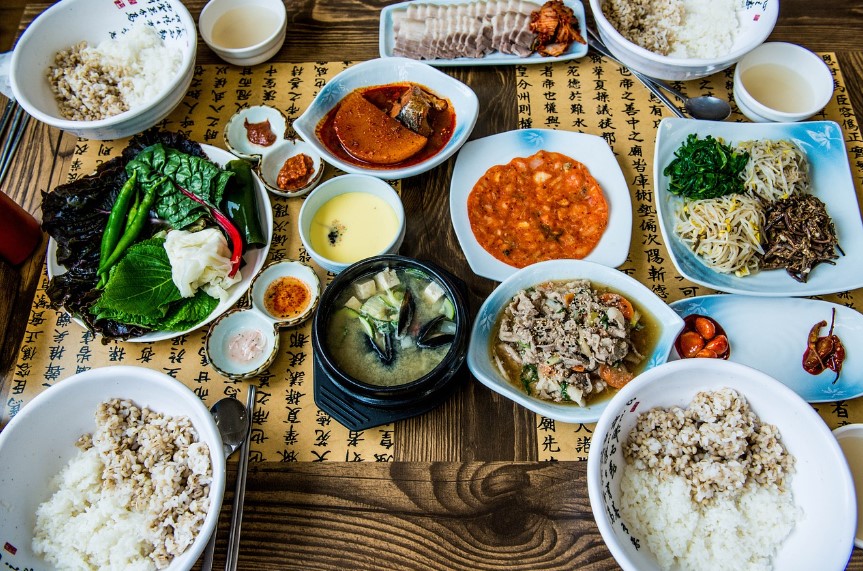Korean cuisine is deeply connected to its heritage, emphasizing a balance of flavors and the use of fresh, seasonal ingredients. Let’s explore some iconic dishes, including the beloved galbijjim.

1. Kimchi (김치)
A staple in Korean households, kimchi is a fermented dish made from cabbage or radish, seasoned with chili, garlic, and other spices. Known for its bold flavor and health benefits due to fermentation, kimchi accompanies nearly every Korean meal, offering a spicy, tangy taste.
2. Bibimbap (비빔밥)
Bibimbap is a vibrant and colorful dish consisting of rice topped with a variety of seasoned vegetables, meat (usually beef), and a fried egg, all mixed with gochujang (Korean chili paste). It’s a well-balanced meal that provides a harmonious combination of textures and flavors, from the crunchy vegetables to the soft rice and savory meat.
3. Galbijjim (갈비찜)
Galbijjim is a tender and flavorful braised beef short rib dish, typically enjoyed during special occasions or holidays. The short ribs are slow-cooked in a savory-sweet soy-based sauce along with vegetables like carrots and chestnuts. The long cooking process makes the meat tender, while the sauce becomes rich and deeply flavored.
4. Doenjang Jjigae (된장찌개)
A savory soybean paste stew, doenjang jjigae is made with doenjang (fermented soybean paste), tofu, vegetables, and occasionally seafood or meat. The fermentation gives it a rich umami flavor, and it’s often enjoyed with rice and banchan (side dishes). This hearty stew is not only delicious but also packed with probiotics.
5. Bulgogi (불고기)
Bulgogi, meaning “fire meat,” is a popular Korean dish made of thinly sliced marinated beef (or pork) grilled over an open flame. The marinade typically includes soy sauce, garlic, sesame oil, and sugar, giving the meat a sweet and savory flavor. It’s often served with rice and wrapped in lettuce with garlic, ssamjang (a thick dipping sauce), and other condiments. Bulgogi is one of the most internationally known and beloved Korean dishes due to its accessibility and balanced flavors.
6. Japchae (잡채)
A classic celebratory dish, japchae features sweet potato starch noodles stir-fried with vegetables and sometimes beef. Flavored with soy sauce and sesame oil, japchae is slightly sweet and savory, with a light, chewy texture. It’s a favorite at special gatherings and holidays, though its delicious flavors make it popular all year round.
7. Hanjeongsik (한정식)
Hanjeongsik is a traditional Korean multi-course meal that showcases a wide variety of dishes, from steamed rice and soups to grilled meats and seafood. Historically served to royalty, hanjeongsik features an array of banchan (side dishes) alongside main courses, offering a diverse and complete dining experience. Each bite highlights the seasonality of ingredients, with a focus on balance and harmony in flavor.
Why Traditional Korean Cuisine is Unique
Korean cuisine emphasizes balance in flavor, health, and tradition. Ingredients like fermented kimchi and doenjang promote gut health, while dishes like galbijjim and bibimbap offer nutrient-dense, flavorful meals. Korean food is designed to be shared, with communal dining bringing people together around a table full of various dishes, creating a deeply social and enriching experience.
Conclusion
Traditional Korean cuisine is a journey through flavors that balance the bold and the subtle, the spicy and the savory. Whether enjoying the sweet and savory bites of bulgogi, the rich umami of doenjang jjigae, or the delicate braised flavors of galbijjim, Korean food offers a rich, health-conscious, and deeply satisfying dining experience that reflects the country’s heritage and culture.
